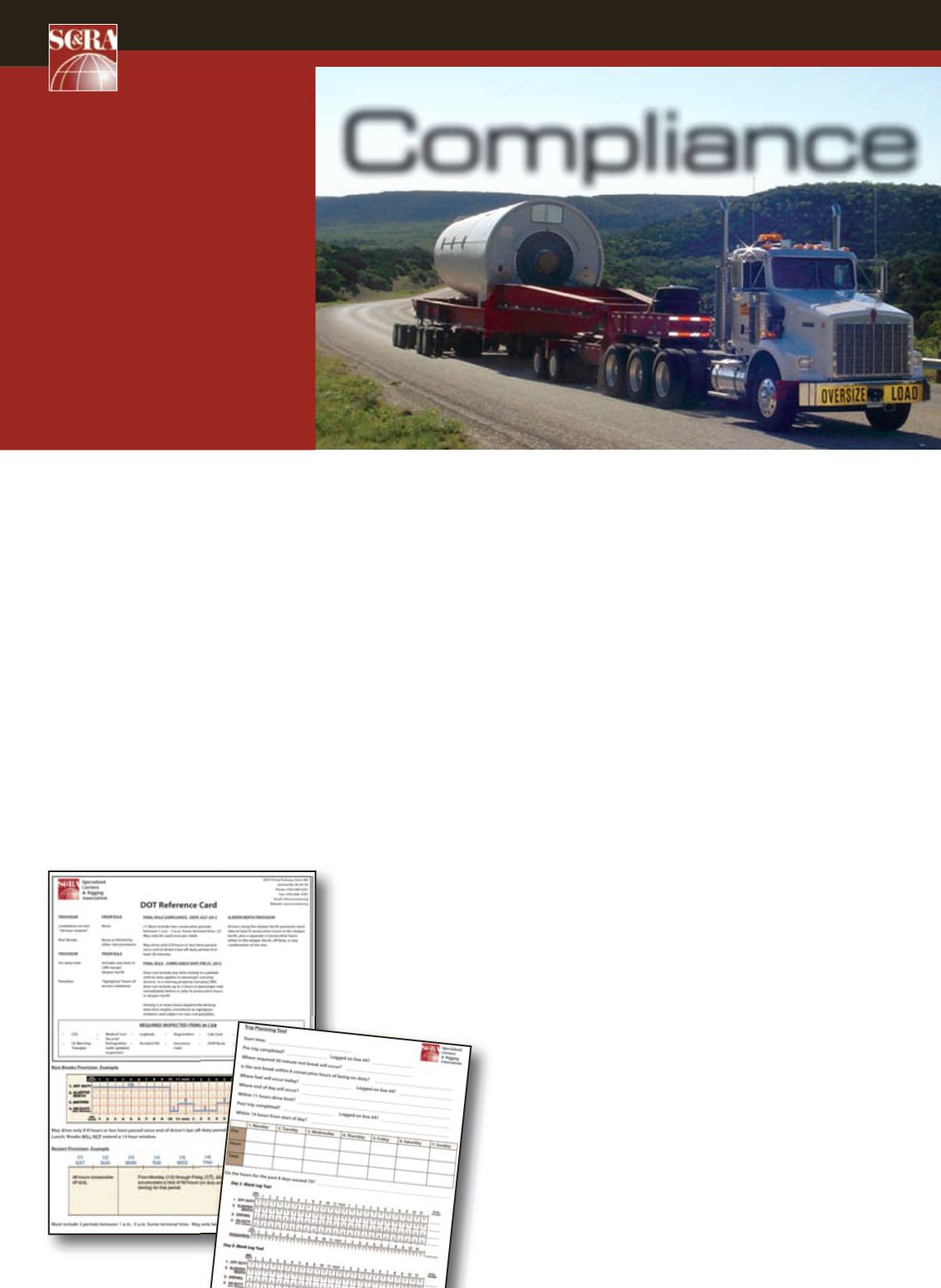
NEWS
ACT
JULY 2013
48
T
he new provisions to the
Federal Motor Carrier Safety
Administration’s (FMCSA)
2011 Hours of Service rule went into
effect on July 1. While disputed in earnest
by a small army of industry leaders,
including those at SC&RA, the changes
will no doubt require a steady amount
of adjustment for drivers, and the many
companies that now find themselves in
the position of having to comply with the
new regulations. Additionally, the cost
of compliance is likely to be high. The
American Trucking Associations (ATA)
has calculated that nearly $320 million in
new training costs will spread itself across
the industry as a result of FMCSA’s HOS
provisions.
Despite significant challenges to the
provisions, SC&RA members are now
faced with the reality that, regardless
How prepared are you
for the new Hours of
Service HOS rules?
Tim Hillegonds
reports
on this hot topic.
Compliance
Public Citizen also challenged FMCSA’s
retention of the 11-hour driving day.
The overall provisions contained the
following:
■
Use of the 34-hour restart to once every
168 hours (once per week).
■
Anyone using the 34-hour restart
provision will have, as part of the
restart, two consecutive off-duty
periods that include 1 a.m. to 5 a.m.
■
Prohibition of driving if more than
eight hours have passed since the end
of the driver’s last off-duty or sleeper-
berth period of at least 30 minutes. For
example, if a driver comes on duty after
a weekend off and immediately begins
an 11-hour trip, the driver will have to
take at least a 30-minute break no later
than the eighth hour of the trip, but
that driver could also take the break
as early as the third hour, leaving a full
eight hours to complete the trip.
■
Revision of the definition of on-duty
time to exclude any time resting in a
parked commercial motor vehicle or
up to 2 hours in the passenger seat of
a moving commercial motor vehicle,
immediately before or after eight
consecutive hours in the sleeper-berth.
SC&RA has supported the ATA in its
effort to challenge the FMCSA provisions,
siding with the ATA’s stance that “…
federal rules further restricting drivers’
ability to work and drive would add
tremendous cost to the economy and
undue burden on drivers while providing
minimal possible safety benefits.”
Big impact
The regulations will certainly have
an impact on SC&RA members. As
representatives at the ATA have stated on
of what hang-ups they may have had,
they are now in the position of having to
address how these new requirements will
affect them. The question the industry is
asking now is: Where do we go from here?
The FMCSA published its final rule
regarding HOS Regulations on December
27, 2011, and established a compliance
effective date of July 1, 2013. As recently
as March 15, 2013, the ATA challenged
several provisions to the FMCSA’s HOS
rule in the U.S. Court of Appeals in
Washington, D.C. Among the challenges
were: new restrictions on the restart
(which will require that it include two
consecutive 1 a.m. to 5 a.m. periods,
and limiting its use to once per week);
the requirement that the mandatory
30-minute break be off-duty; and the
unannounced narrowing of the exemption
for local delivery drivers, thus applying the
break requirement to these individuals,
as well. Along with the restart challenge,
The American Trucking Associations
(ATA) has calculated that nearly $320
million in new training costs will
spread itself across the industry as a
result of FMCSA’s HOS provisions.
The SC&RA Safety Education and Training
Committee has developed a quick-reference
card and checklist to assist members in
understanding the new HOS requirements.
This card is to be used as a resource for
drivers and supervisors to ensure the
proper items are
available in the cab
upon inspection.
It also provides
specific examples of
the correct way to
record HOS duty
time and breaks.
This and other helpful
materials can be
downloaded at


